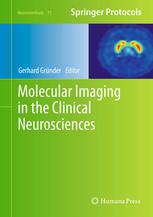

Most ebook files are in PDF format, so you can easily read them using various software such as Foxit Reader or directly on the Google Chrome browser.
Some ebook files are released by publishers in other formats such as .awz, .mobi, .epub, .fb2, etc. You may need to install specific software to read these formats on mobile/PC, such as Calibre.
Please read the tutorial at this link: https://ebookbell.com/faq
We offer FREE conversion to the popular formats you request; however, this may take some time. Therefore, right after payment, please email us, and we will try to provide the service as quickly as possible.
For some exceptional file formats or broken links (if any), please refrain from opening any disputes. Instead, email us first, and we will try to assist within a maximum of 6 hours.
EbookBell Team

4.1
40 reviewsWhile researchers with Positron Emission Tomography (PET) and Single Photon Emission Computed Tomography (SPECT) essentially addressed questions from the whole spectrum of cardiology, oncology, and the neurosciences, it was most notably the latter that provided completely new insights into physiological and disturbed human brain function. In Molecular Imaging in the Clinical Neurosciences, experts in the field provide the reader with up-to-date information on the basic principles of molecular imaging and its major applications in the clinical neurosciences. Beginning with a section offering a comprehensive review of the methodological foundations from physics, chemistry, and mathematics including mathematical modeling, essential for meaningful data analysis, this detailed volume then continues with sections on the major biological principles and neurochemical targets relevant in current neuroimaging research and the major clinical applications from the fields of psychiatry and neurology. Written for the popular Neuromethods series, this work contains the kind of key description and implementation advice that guarantees successful results.
Authoritative and cutting-edge, Molecular Imaging in the Clinical Neurosciences serves as a helpful source of knowledge for both basic and clinical scientists from psychology, psychiatry, neurology, nuclear medicine, nuclear chemistry, and the associated disciplines, all of which makes molecular imaging such a rewarding, interdisciplinary field of work.